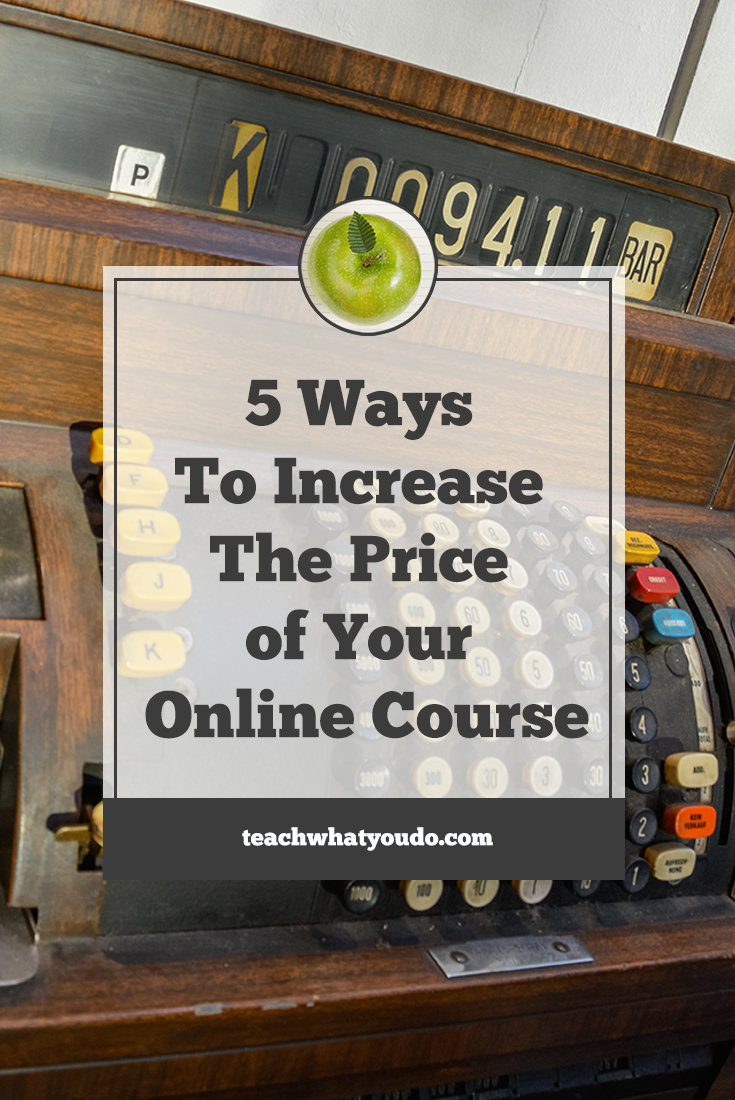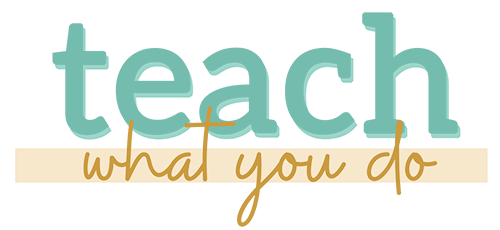
Pricing your online course is a question many of us fret on. What if you charge too much and no one buys? What if you charge too little, devaluing your work and even leaving money on the table?
The best approach is to, from day one, design your course to be packed with value and features that let you confidently set the price point you want.
Your online course price should be based on a number of factors—all of which have to do with the value your customers perceive your course to offer. These include:
- the value of the outcome your class provides,
- the scope of the solution you’re delivering,
- the level of interaction you have with your students,
- this course’s position within your own portfolio of courses, and
- this course’s positioning relative to competitors.
Here are five ways you can increase the perceived value—and selling price!–of your course. Mix and match, choosing the options best for your current class, saving others as you build the pieces of your classroom portfolio.
1. Design an online course that saves your students money OR creates opportunities for them to earn additional money.
Here are examples of course outcomes that convert to money.
- A course that makes your students more productive or healthy via lifestyle changes can enable them to do more work and earn more money.
- A course that teaches your students to efficiently and cost-effectively “DIY” something they might usually purchase enables them to save money.
- A course that teaches your students a new and marketable skill enables them to change their work possibilties and, thus, earn more money.
2. Design your online course to save your students time in their pursuit of a goal.
You’ve heard again and again: time is money. So let’s give your students some value-packed TIME as a result of their work with your class.
When you offer a class that enables your students to get to their desired goal with more efficiency, less stress, and less uncertainty, you are giving them time.
Design and present your class as the option that lets them push the EASY BUTTON on the outcome they are pursing. As you offer your class and the problem it solves or goal it achieves, make sure they know you’re giving them a fast-track to this endpoint.
Let your prospective customers know: “Sure you could track down solutions from free sources, teaching yourself as you go. OR you can use my class to get to the outcome more quickly—and save a whole bunch of valuable time.”
3. Give your students a start-to-finish solution: a system or a blueprint.
When your students can turn to your class for the complete roadmap to achieving their goal, the value of your class increases.
Do you have your own proven process or approach for getting to an outcome that you can systematize, laying each step out clearly?
When you give your students a roadmap to a proven methodology, you make the complex simple for them, revealing pitfalls to be avoided and opportunities to be leveraged. All this saves them time and makes it possible for your students to have greater success.
While the first online course you design may be a smaller piece, still keep this idea of a premium-priced signature system in mind.
4. Add an increased level of “touch” to your course.
“Touch” refers to the “hands-on” support your students receive. The amount of touch you'll include sits on a spectrum with “self-paced-and-no-interaction” on one end and “step-by-step-coaching” on the other end. The amount of personalized coaching you include in your online course will impact the price you charge and even your positioning of the course in the market. It's more efficient to offer a hands-off class and more costly to add touch.
With higher-end courses, your successful graduates (and the examples and testimonials they provide) can have a substantial impact on future sales—thus, touch, and a support of student success, is actually the more profitable choice.
Add touch to your class with:
- a community or forum,
- one-on-one coaching,
- group coaching,
- critique or hotseat sessions.
5. Provide an “anchor” price on the sales page.
Your product will have different values for different purchasers. What's more, your students might not know what the real value your class holds for them.
When you can add an anchor price, you give customers a starting point for making comparisons. You also acknowledge that the value of the class varies for different people.
For example, you could present a class price of $97 and add an option at $187 with a private community. Now $97 sounds reasonable and they’re comparing the two packages, trying to decide whether the price differential for the higher priced class merits the extra dollars they’d need to spend.
You can even add a third option—this is known as bracketing or tiered pricing–but be sure it’s a higher price than the other two. Taking the example above, add a $497 option that includes personalized one-on-one work critiques. This will drive the majority of purchasers to the middle option –and will result in some sales at this higher, premium-priced option. The result should be more revenues overall.
Don’t add more than three prices, though. You’ll confuse people and encourage them to just not make a decision. And be sure to BRACKET UP with your third option—because the goal should be to drive buyers to the middle.
Grab our “5 Ways to Boost Your Online Course Price” Quick Guide.
I want to make sure you keep these approaches in mind. That's why I've got a graphic quick guide for you. Click on the bar below to get it!
